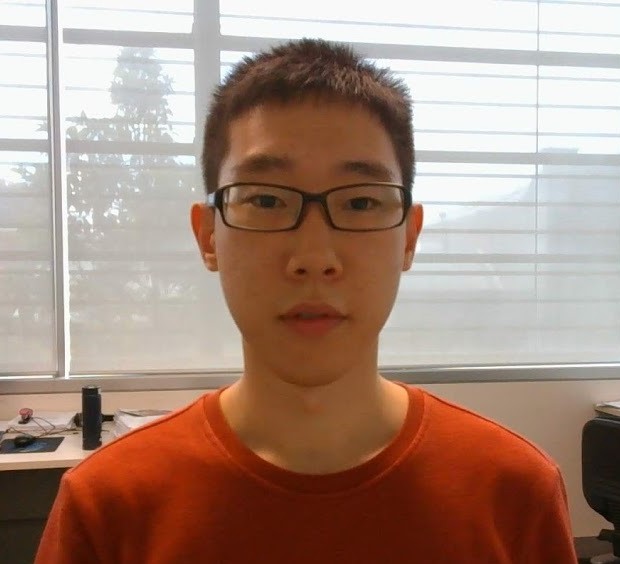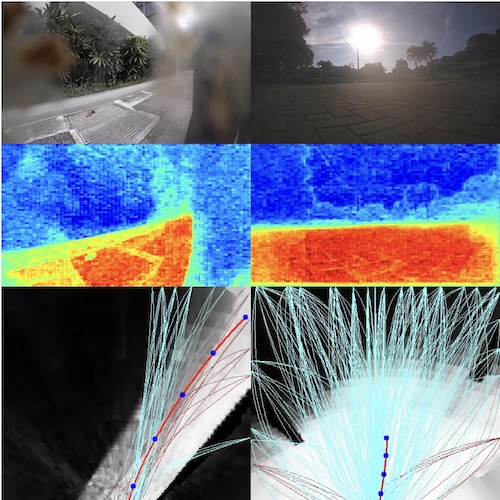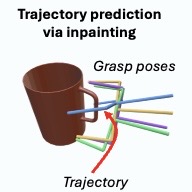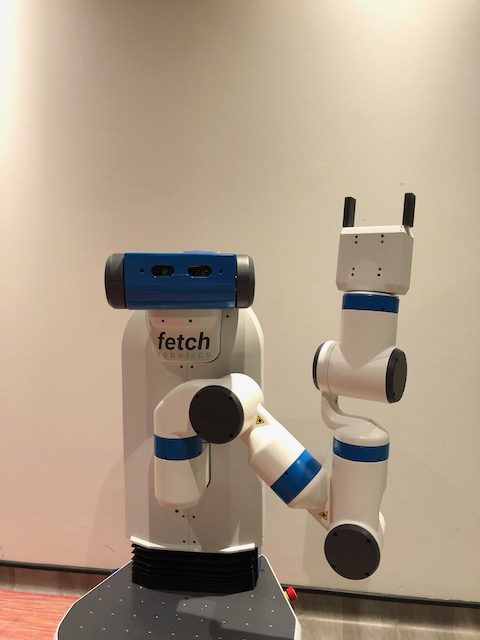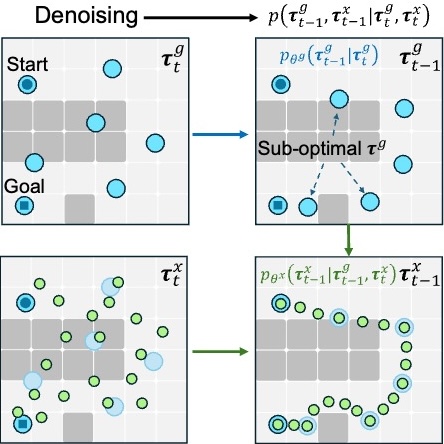LTLDoG: Satisfying Temporally-Extended Symbolic Constraints for Safe Diffusion-based Planning, Zeyu Feng★, Hao Luan★, Pranav Goyal★, Harold Soh★, IEEE Robotics and Automation Letters
Links:
Operating effectively in complex environments while complying with specified constraints is crucial for the safe and successful deployment of robots that interact with and operate around people. In this work, we focus on generating long-horizon trajectories that adhere to novel static and temporally-extended constraints/instructions at test time.
We propose a data-driven diffusion-based framework, LTLDoG, that modifies the inference steps of the reverse process given an instruction specified using finite linear temporal logic (LTLf). LTLDoG leverages a satisfaction value function on LTLf and guides the sampling steps using its gradient field. This value function can also be trained to generalize to new instructions not observed during training, enabling flexible test-time adaptability.
Experiments in robot navigation and manipulation illustrate that the method is able to generate trajectories that satisfy formulae that specify obstacle avoidance and visitation sequences.
Resources
You can find our paper here. Check out our repository here on github.
Citation
Please consider citing our paper if you build upon our results and ideas.
Zeyu Feng★, Hao Luan★, Pranav Goyal★, Harold Soh★, “LTLDoG: Satisfying Temporally-Extended Symbolic Constraints for Safe Diffusion-based Planning”, IEEE Robotics and Automation Letters
@ARTICLE{10637680, author={Feng, Zeyu and Luan, Hao and Goyal, Pranav and Soh, Harold}, journal={IEEE Robotics and Automation Letters}, title={LTLDoG: Satisfying Temporally-Extended Symbolic Constraints for Safe Diffusion-Based Planning}, year={2024} }
Contact
If you have questions or comments, please contact zeyu or hao.
Acknowledgements
This research is supported by A*STAR under its National Robotics Programme (NRP) (Award M23NBK0053). The authors would also like to acknowledge partial support from a Google South Asia & Southeast Asia Award and from the National Research Foundation, Singapore under its Medium Sized Center for Advanced Robotics Technology Innovation. —
